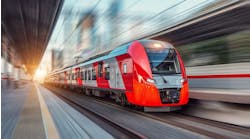Knorr-Bremse and Alstom have extended their existing framework contract for 129 Coradia Lint and Coradia iLint regional trains. Knorr-Bremse will supply KBGM-P braking systems at least until the end of 2025.
“Knorr-Bremse’s technologies play a central role in enabling efficient rail mobility and optimal train scheduling – and that includes regional overland routes,” said Dr. Jürgen Wilder, member of the executive board of Knorr-Bremse AG and responsible for the Rail Vehicle Systems division. “This new version of the contract is a confirmation of our longstanding cooperation with Alstom and an indication of our shared goal of making mobility safer, more available and more reliable for increasing numbers of people.”
The major contract for 129 trains covers braking systems for the Coradia Lint regional train, as well as the Coradia iLint, with its emission-free hydrogen fuel cell technology. It also includes options for delivery of braking systems for a further 350 vehicles. Knorr-Bremse will initially equip 88 Coradia Lint trains, including trains with the latest Stage V exhaust emission standard, and 41 Coradia iLint trains with braking systems. With seating for up to 300 passengers, the regional trains will operate at top speeds up to 140 km/h (87 mph) in Germany and in Denmark. The KBGM-P pneumatic braking systems are already installed in more than 1,000 trains from the earlier generation of Coradia Lint, as well as the two prototype iLint trains.
“Knorr-Bremse’s 115 years of experience and more than 15 years of cooperation with Alstom over development of the Coradia platform provide a strong basis for jointly developing the future of the sector,” said Mark Cleobury, member of the management board of Knorr-Bremse Rail Vehicle Systems. “As systems supplier, we can make an important contribution, especially in the context of the projected trend towards increased mobility by rail.”

